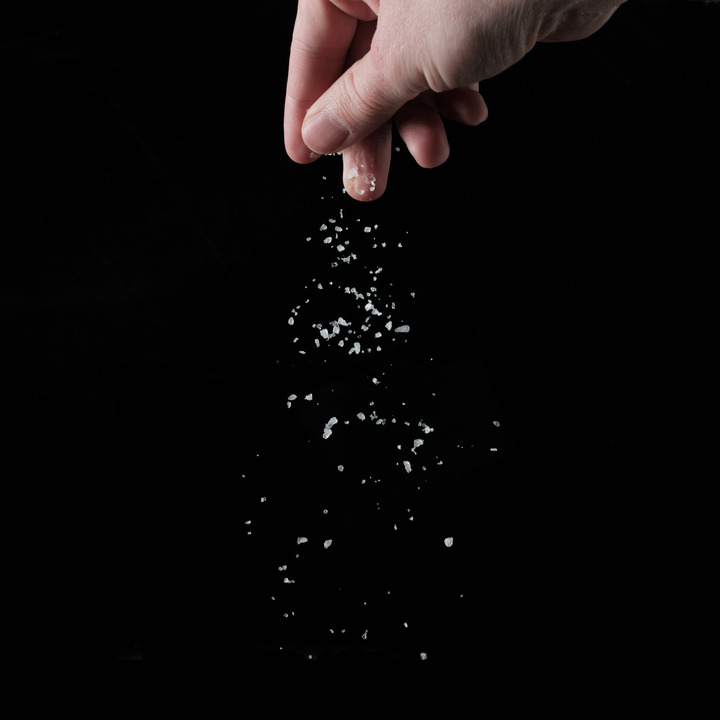A Case of Mukund’s Journey Towards Wellness
In the heart of Bangalore, where bustling streets and tranquil parks coexist, resides a man named Mukund. A diligent professional in his mid-40s, Mukund’s life had been bustling too, until an unexpected health hiccup forced him to ponder his dietary choices. High blood pressure, a common ailment often referred to as the “silent killer,” had stealthily made its way into Mukund’s life. With a desire to explore natural remedies, Mukund stumbled upon the age-old remedy of Sendha Namak, also known as rock salt. In this article, I will delve into the science and wisdom behind Sendha Namak and its potential impact on high blood pressure.
What is Sendha Namak?
Sendha Namak, a variant of salt, is a mineral-rich substance derived from the ancient sea beds. Its distinct pink hue and granular texture have earned it a place in culinary traditions and natural therapies. Mukund, like many others, was intrigued by its reputation as a healthier alternative to table salt, particularly for those dealing with high blood pressure.
Sendha Namak and Blood Pressure
The Sodium Conundrum
High blood pressure, or hypertension, is often linked to excessive sodium intake. Common table salt, or sodium chloride, is a major source of dietary sodium. Excessive sodium intake can lead to fluid retention and strain on the cardiovascular system, elevating blood pressure. This is where Sendha Namak takes the spotlight.
Sendha Namak contains lower sodium content compared to table salt. It’s also rich in essential minerals like potassium, magnesium, and calcium, which contribute to a balanced electrolyte profile. These minerals play a role in regulating blood pressure and maintaining heart health. Mukund, driven by a desire to manage his blood pressure naturally, found himself drawn to these potential benefits.
The Case Study: Mukund’s Tryst with Sendha Namak
Mukund’s Experiment
Mukund’s journey began with a simple swap: replacing table salt with Sendha Namak in his meals. He embraced this change with cautious optimism, keeping track of his blood pressure readings. Over a span of several weeks, a remarkable trend emerged. Mukund’s blood pressure levels showed a gradual decline, much to his delight. This case study mirrors the experiences of many who have turned to Sendha Namak.
Deciphering the Benefits: Sendha Namak and High Blood Pressure
The Low Sodium Advantage
One of the key factors behind Sendha Namak’s potential benefits for high blood pressure lies in its lower sodium content. Unlike regular salt, Sendha Namak contains approximately 98% sodium chloride, while table salt can be as much as 99.9% sodium chloride. This marginal difference might seem inconsequential, but it can have a notable impact on sodium-sensitive individuals like Mukund.
Minerals that Matter
Sendha Namak’s mineral profile, encompassing potassium, magnesium, and calcium, contributes to its potential blood pressure-regulating properties. Potassium, in particular, is renowned for its ability to counteract the adverse effects of sodium. It promotes vasodilation, which relaxes blood vessels and eases blood flow, consequently helping to manage blood pressure. Mukund’s experience aligns with the idea that these minerals could have played a role in his blood pressure improvement.
All About Sendha Namak and Blood Pressure
1. Can Sendha Namak completely replace regular salt in my diet?
While Sendha Namak has its benefits, it’s important to remember that moderation is key. Consult a doctor before making any drastic dietary changes.
2. Is Sendha Namak suitable for everyone with high blood pressure?
Sendha Namak may offer advantages, but individual responses vary. What works for one may not work for another. Personalized advice from a medical expert is crucial.
3. How does Sendha Namak’s taste compare to regular salt?
Sendha Namak has a milder, less intense taste compared to table salt. It can enhance flavors without overwhelming the palate.
4. Are there any risks associated with Sendha Namak?
While it’s generally considered safe, excessive consumption of any type of salt should be avoided, especially for those with kidney issues or other health conditions.
5. Can Sendha Namak cure high blood pressure?
Sendha Namak is not a cure but a potential dietary aid. It should complement a holistic approach to managing high blood pressure, including a balanced diet, exercise, and medical guidance.
6. Is Sendha Namak only beneficial for high blood pressure?
Sendha Namak’s mineral content offers a range of potential health benefits beyond blood pressure regulation. However, specific outcomes may vary.
7. Can I use Sendha Namak in baking and cooking, like regular salt?
Yes, Sendha Namak can be used in cooking and baking. It’s a versatile ingredient that can add depth to your dishes.
8. Are there any culinary traditions associated with Sendha Namak?
Yes, Sendha Namak is widely used in Ayurvedic and fasting recipes, including during festivals like Navratri.
9. How quickly can I expect to see results in my blood pressure if I switch to Sendha Namak?
Results vary among individuals. Some might experience changes within weeks, while for others, it could take longer. Consistency is key.
10. Can Sendha Namak consumption lead to low blood pressure?
While Sendha Namak’s mineral composition might have a blood pressure-lowering effect, drastic drops in blood pressure are unlikely from moderate consumption.
Embracing a Healthier Tomorrow
Mukund’s journey isn’t an isolated case; it embodies the potential of holistic approaches to wellness. While Sendha Namak shows promise in aiding blood pressure management, it’s essential to approach it as a part of a comprehensive strategy. A blend of mindful eating, regular exercise, and medical guidance form the cornerstone of a healthier life.
So, is Sendha Namak, or rock salt, good for high blood pressure? As I, you, and we delve into the realm of natural remedies, Mukund’s experience serves as a beacon of hope. Remember, each body is unique, and what works for one might not work for another. In our pursuit of wellness, let’s celebrate the power of informed choices.

